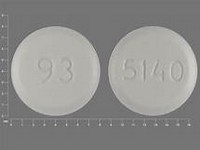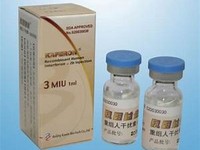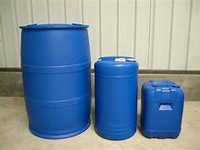Alendronic acid

Alendronic acid
CLINICAL USE
Treatment and prophylaxis of osteoporosis
DOSE IN NORMAL RENAL FUNCTION
5–10 mg daily or 70 mg once weekly
PHARMACOKINETICS
Molecular weight :
249.1 (325.1 as
sodium salt)
%Protein binding :
78
%Excreted unchanged in urine :
Approx 50
Volume of distribution (L/kg) :
28 litres
half-life – normal/ESRD (hrs) :
>10 years/Increased
DOSE IN RENAL IMPAIRMENT
GFR (mL/MIN)
35–50 Dose as in normal renal function
<35
Avoid. See ‘Other Information’
DOSE IN PATIENTS UNDERGOING RENAL REPLACEMENT THERAPIES
CAPD :
Unlikely to be dialysed. Dose as in
GFR<35 mL/min
HD :
Not dialysed. Dose as in
GFR<35 mL/min
HDF/high flux :
Unknown dialysability. Dose as in
GFR<35 mL/min
CAV/VVHD :
Unlikely to be dialysed. Dose as in
GFR<35 mL/min
IMPORTANT DRUG INTERACTIONS
Potentially hazardous interactions with other drugs
Calcium salts: reduced absorption of
alendronate
ADMINISTRATION
Reconstition
–
Route
Oral
Rate of Administration
–
Comments
–
OTHER INFORMATION
Swallow whole with a glass of water on an
empty stomach, at least 30 minutes before
breakfast and any other oral medication
Patient should stand or sit upright for at
least 30 minutes after taking tablets
Combination therapy with alendronate and
intravenous calcitriol, for the treatment
of secondary hyperparathyroidism in
haemodialysis patients, has been used
at a dose of 10 mg alendronate plus IV
calcitriol 2 mcg post dialysis to reduce
PTH levels. (McCarthy JT, Kao PC,
Demick DS, et al. Combination therapy
with alendronate and intravenous
calcitriol for the treatment of secondary
hyperparathyroidism in hemodialysis
patients. J Am Soc Nephrol. 1999; 10
Program, 81A–82A.)
Manufacturers do not recommend use of
alendronate in severe renal impairment
due to lack of data
One paper reviewed all the information
available and concluded that 50% of the
recommended dose may be possible
in ESRD, but more trials are required
and osteomalacia and adynamic bone
disease must first be excluded. (Miller
PD. Treatment of osteoporosis in chronic
kidney disease and end-stage renal disease.
Curr Osteoporos Rep. 2005; 3: 5–12.)
Anecdotally, several renal units use either
70 mg weekly or standard doses of all
preparations in patients with CKD 3, 4 and
5 to good effect
See how to identify renal failure stages according to GFR calculation
See how to diagnose irreversible renal disease
Home









